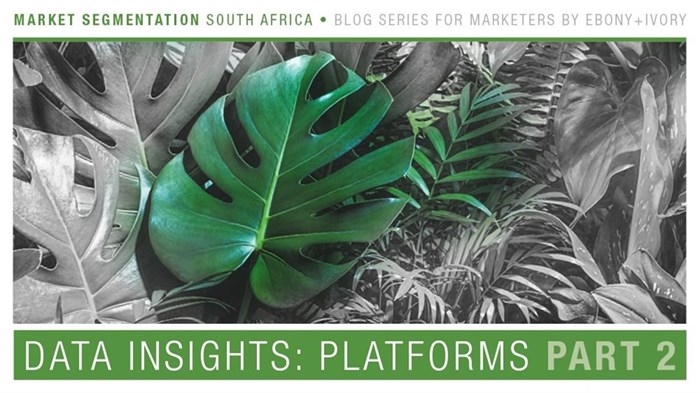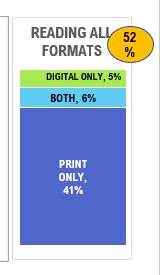As we said in the previous post in this blog series for marketers, when it comes to media consumption, the vast majority of consumers do everything. They read, watch, listen and experience content as a seamless always-on offering. Replacing living standards measures (LSMs), the South African socio-economic measures (SEM) segmentation tool is effective to inform how we craft a well-received narrative.
Reading value into content reading
Much has been said about the demise of reading but as media planners, we must differentiate between reading as a behaviour and measured readership of print. Whether in the newspaper or magazine category, 52% of South African adults read online newspapers or magazines (compared to 93% watching television) but only 41% read a printed edition.
One in 10 magazine or newspaper readers are online readers but only 5% of these people read exclusively on a digital platform.
Readership is at its zenith in the elite market (SEM_C5) with 52% of all adults in this cluster reading newspapers (either print or digital). Incidence of total magazine reading is higher at 57% of this market but, in a mirror move, as is the case for newspapers, there are fewer readers of printed editions (39%).
Newspapers and magazines remain a viable media platform for reaching the top end of the Mzansi market. It is really only in SEM_C1 and SEM_C2 that the viability of this medium as an advertising platform may be called into question.
Turn up the volume on content listening
When it comes to analysing listening behaviour in the post-Amps landscape, we need to mine for insights across several available databases. Radio continues to offer high weekly reach across the full SEM spectrum. The last BRC Ram (radio audience measurement) database reports that weekly radio listenership is a high performer at 92%.
Radio is often perceived to be an ‘in-car’ medium, but nine out of every 10 weekly listeners (93%) are listening to local radio waves in the home. This would account for the fact that three out of every four tune in on a ‘radio set’ or ‘hi-fi’ at some point. It is interesting to note the enhanced commuting mobility at the top end of the market. In SEM_C5, 73% of adults listen to radio while travelling in a car or taxi and in SEM_C1, almost half the weekly listeners will listen to radio at some point while commuting.
The strongest insight of all is the number of people listening to radio on a mobile device each week. Whether you are targeting listeners, viewers or readers, the ubiquitous nature of the cellphone as a content delivery platform needs to be factored into every advertising campaign.
The SEM segmentation model also creates an ideal platform from which media strategists can map out the distribution of stations. For example, SABC ALS (African language stations) have a strong affinity with SEM cluster one, two and three. In this sector of the market, Ukhozi FM remains the number one station. From SEM_C4, other station offerings become more viable and Metro FM takes over as the biggest station in SEM_C4 and SEM_C5.
From SEM_C4, other regional commercial stations gain traction, along with top-end offerings, such as SAFM and Radio Sonder Grense (RSG). Talk radio has its strongest affinity with SEM_3, which may also highlight the potential power of community radio as the ‘voice of the people’. An interest in self-help content also provides a lens into the contribution of community radio as a platform for community upliftment.
Often too small to measure at an individual station level, collectively community radio is particularly effective in the middle market where almost one in every five radio listeners (18%) will tune into a community station during the average week. From SEM_C4, the contribution of regional commercial stations begins to establish a foothold and in many respects, successful regional commercial stations play the role of community station on a larger canvas.
Programme content listened to ‘most often’ provides landmark insights into the trends unfolding within different market sectors in South Africa. At the top end, for example, financial reports and traffic are heavily relied on by listeners whereas religious programmes, radio dramas and celebrity entertainment gain traction at the lower end of the SEM model.
In abandoning the medium is the message mindset and embracing the reality that the message is content marketers can be assured the SEM segmentation model has the agility and functionality to tap into a rich source of freely available marketing and advertising data.
In the next article of this blog series for marketers, we unpack the ultimate pillar of products in South Africa.
Contact us here>
About the Ebony+Ivory Marketing Segmentation South Africa Series
Drawing data and insights from the most recently published industry database Pams_2019 (released April-2020) and the Nielsen Fusion Study 2020 (released November_2020), we interrogate the SEM model through four lenses: People and places, purchasing power, products and platforms.
















































